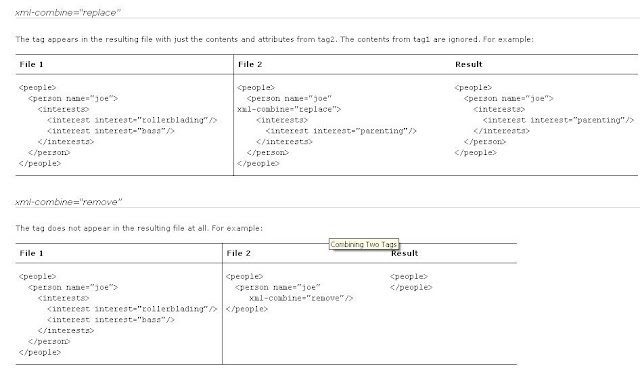An XML file might appear at several points in the CONFIGPATH. The ATG platform, at runtime, automatically combines all the XML files in the CONFIGPATH with the same name into a single composite file, which is then used by the appropriate component.
XML files are combined one tag at a time: in other words, tags are matched up, and the combination rules are applied to each pair of matched tags. XML file combination is controlled with an XML attribute named xml-combine. This attribute is used only in the preprocessing stage of XML file combination.
The xml-combine attribute can have the following values:
xml-combine = "replace"
xml-combine = "remove"
xml-combine = "append"
xml-combine = "append-without-matching" --> This is the same as
xml-combine="append", except that embedded tags are not matched and combined recursively. The content is simply appended.xml-combine = "prepend"
xml-combine = "prepend-without-matching"
Read more @ http://docs.oracle.com/cd/E23507_01/Platform.20073/ATGProgGuide/html/s0207combiningtwotags01.html
Samples :

Comments
Post a Comment